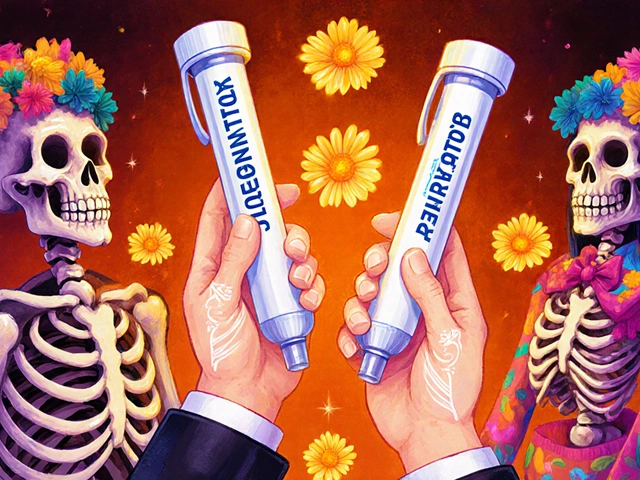Temovate vs alternatives – comparing the potent steroid with other skin treatments
When working with Temovate, a prescription‑only, high‑potency topical corticosteroid used for severe skin disorders like psoriasis and eczema. Also known as clobetasol propionate, it delivers strong anti‑inflammatory action but brings a distinct side‑effect profile that many patients want to avoid.
Temovate belongs to the broader class of topical corticosteroids, medicines that mimic the body’s natural cortisol to reduce inflammation, itching, and scaling on the skin. Within this class, potency ranges from mild (hydrocortisone) to ultra‑potent (clobetasol). The ultra‑potent category, which includes Temovate, is typically reserved for thick plaques of plaque psoriasis, chronic hand eczema, or stubborn dermatitis that hasn’t responded to milder agents. While the drug’s effectiveness is undeniable, the risk of skin thinning, stretch marks, and hypothalamic‑pituitary‑adrenal (HPA) suppression rises with prolonged use. Understanding these trade‑offs helps you decide whether you need the strongest tool or a gentler alternative.
One of the most common alternatives to high‑potency steroids are calcineurin inhibitors, non‑steroidal creams like tacrolimus and pimecrolimus that suppress immune activity without causing skin atrophy. They shine in areas where steroids are risky, such as the face or intertriginous zones, and are approved for atopic dermatitis and off‑label for plaque psoriasis. Although they can cause a brief burning sensation when first applied, they lack the long‑term thinning effect of Temovate, making them a solid choice for maintenance therapy after an initial steroid burst.
Key factors to consider when choosing a treatment
First, match the drug potency to the severity and location of your condition. Ultra‑potent steroids like Temovate work fast on thick plaques but should be limited to short courses (often 2‑4 weeks) and used under close medical supervision. For sensitive skin—think eyelids, groin, or flexural areas—switching to a calcineurin inhibitor or a low‑potency steroid (hydrocortisone 1%) reduces the chance of side effects. Second, think about the treatment goal. If you need rapid clearance for a flare, Temovate can deliver that, but for long‑term control, a steroid‑sparing regimen that blends moisturizers, vitamin D analogues (calcipotriene), or mild steroids may be more sustainable.
Third, factor in patient preferences and adherence. Some people dislike the oily texture of Temovate and prefer the lighter feel of tacrolimus ointment. Others worry about steroid phobia and will stick to moisturizers alone, which may delay improvement. Real‑world experience shows that combining a brief, potent steroid burst with a maintenance phase of non‑steroidal options often yields the best balance between efficacy and safety. Always discuss tapering schedules with your dermatologist to avoid rebound inflammation.
Finally, keep an eye on systemic absorption. While most topical drugs stay local, applying Temovate to large body surface areas, broken skin, or using occlusion (covering with bandages) can increase bloodstream levels, potentially affecting adrenal function. Routine monitoring, especially in children or elderly patients, is essential. In contrast, calcineurin inhibitors have minimal systemic absorption, which is another reason they’re favored for chronic, low‑grade inflammation.
Below you’ll find a curated collection of articles that dig deeper into each of these points. From side‑by‑side efficacy charts of Temovate versus other steroids, to step‑by‑step tapering guides, and detailed looks at non‑steroidal alternatives, the posts cover practical tips, safety alerts, and real‑world comparisons. Use them to decide which route fits your skin’s needs best and to stay informed about the latest evidence‑based recommendations.





